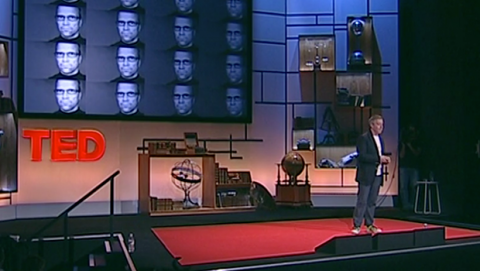Design thinking is not a codified process or a step-by-step framework for innovation. More than anything, it’s a mindset for approaching new product and service development based on user-focused practices and prototyping. As a result, the concept can be difficult for IT leaders and team members to understand fully - or explain to other people. Discussions of design thinking often come tightly coupled with DevOps and innovation strategies – but while all three go together, each has its own principles.
The following TED talks, however, do a great job of illustrating some of the major tenets of design thinking – observation, empathy, human need, ongoing engagement.
[ What do people commonly get wrong about design thinking? Read also: 10 design thinking myths debunked. ]
These videos are valuable viewing for people interested in exploring or furthering their organization’s adoption of design thinking approaches.
1. The first secret of design is … noticing
Speaker: Tony Fadell
Tony Fadell begins his talk with a scene from “The Blues Brothers” in which Jake visits Elwood’s Chicago apartment for the first time. The El rushes by outside the window, rattling the entire room, leading Jake asks how often it goes by. “So often,” Elwood replies, “you won’t even notice it.” Then something falls off the wall.
Fadell uses the vignette to illustrate how easily humans get used to the way things are. In many ways, such habituation serves an important purpose. But innovation comes from actually noticing these things and trying to improve upon them. Fadell, a designer behind the first iPod and founder of Nest Labs, knows the subject well. In this entertaining and anecdote-laden talk, Fadell sells us on the value of not just noticing the way things are but seeing those situations as opportunities for change. “It’s seeing the invisible problem, not just the obvious problem, that’s important,” Fadell says, “not just for product design, but for everything we do.”
2. Designers – think big!
Speaker: Tim Brown
Tim Brown is the CEO of Palo Alto-based consulting firm IDEO, one of the first firms to help companies apply the concept of design thinking to product and service development.
In this early design thinking talk, Brown addresses the reemergence of design thinking as a solution for tackling new problems and explores how its concepts can be applied outside of new product development. Whether the discipline is applied to technology or economics, he says, it always starts with what humans might need. What makes life easier? What makes technology useful? More than just incremental shifts, like tweaking an interface, he says, it’s “about understanding culture and context.” Understanding the human need is step one. Prototyping is the vehicle for progress. And the end goal is not consumption, but ongoing participation and interaction between producer and consumer to create experiences that are “meaningful, productive, and profitable.”
3. How to build your creative confidence
Speaker: David Kelley
David Kelly, the founder of IDEO as well as Stanford University’s Hasso Plattner Institute of Design, is a foundational figure in modern design thinking. Here he explains how design thinking processes can turn even the most technical professional into a creative force. In this video, Kelley shares anecdotes of taking the most “non-creative” business leaders through his d.school classes at Stanford, where they learn about design thinking, empathy, and iterative prototyping, and seeing them emerge to redesign processes, experiences, and business models. Through a series of small successes, Kelley says, any willing student can turn fear of creativity into familiarity and surprise themselves with the ideas that result.
4. Design is in the details
Speaker: Paul Bennett
British branding and design leader Paul Bennett explains that design doesn’t necessarily have to be about “Big Ideas”, but may be best used to solve small – but overlooked and universal – problems. Bennet introduces his concept of the “Blinding Glimpse of the Bleeding Obvious”: those good ideas that are “so staring-at-you-right-in-the-face that you kind of miss them.” The most valuable changes may not be systemic, he argues but those tiny things that make a huge difference in experience. The key to figuring out what those things are is to put yourself in the shoes of the user or customer.
5. Speed up innovation with design thinking
Speaker: Guido Stompff
Innovation is something everyone love to talk about, says Guido Stompff, but few companies know how to achieve. Someone goes to the board of directors or management team with a brilliant idea, but the corporate decision-makers first want to know how much it will cost, how much money it will make, how much time it will take, what the competition will do, and so on.
Organizations that really want to innovate should take a page from the way architects, designers, and artists work, Stompff says in this TEDx talk. They start with some sketches, show them to others, get input client, and sketch again. It’s a design thinking approach that Stompff says anyone can apply.
In this talk, he shares four ways to innovate like a designer. The first is to just start. Don’t wait to settle on plans or budgets, but instead take some action. The second is to team up; never innovate on your own. The third is to think in terms of options – and lots of them – rather than in solutions. And the fourth is to make things, break things, and visualize things so that you can learn on the go.
[ Researching design thinking? Read our related article, Design thinking: 7 questions to ask before you start. ]






